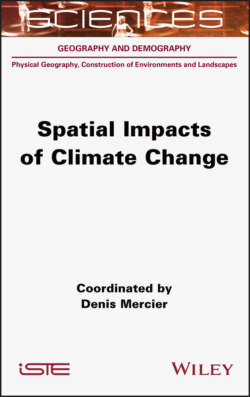Читать книгу Spatial Impacts of Climate Change - Denis Mercier - Страница 18
1.5.3. Volcanism
ОглавлениеMajor volcanic eruptions can inject huge amounts of gases into the stratosphere, including carbon dioxide Co2, sulfur dioxide So2 or hydrogen sulfides H2S. Sulfur gases (So2 and H2S) lead to the formation of liquid sulfate aerosols in the stratosphere with a lifetime of a few years. These aerosols scatter incoming solar radiation and absorb infrared radiation. They then lead to a clear reduction in the radiation reaching the earth's surface and thus induce cooling.
Major periods of volcanic activity in the Earth's geological past, such as the one that allowed the Deccan traps in India to form, have resulted in climatic changes that have caused major environmental crises, such as the most famous mass extinction of the late Cretaceous period, 65 million years ago, which contributed to the extinction of the dinosaurs. The multi-millennia history of societies also includes a number of volcanic eruptions that have modified the climate, with repercussions at different scalar levels: climatic, agricultural, sanitary, demographic and political (Eldgja in 939-940, Samalas in 1257, Laki in 1783, Tambora in 1815, Krakatoa in 1883). Two major volcanic eruptions in 536 and 540, the names of the active volcanoes involved are still not known with certainty, are believed to have caused a 2°C drop in temperature in the northern hemisphere during the decade 536-545. A positive feedback loop of spatial extension of the Arctic ice pack would thus have amplified volcanic-induced atmospheric cooling by the combined increase in albedo and reduced ocean-atmosphere interactions (Toohey et al. 2016).
Reconstructions of summer temperatures for the Northern Hemisphere can be made for the last 1500 years based on tree ring widths and maximum wood density. For the Samalas eruptions of 1257, the summer cooling is estimated to have been -1.3°C for the extra-tropical regions of the Northern Hemisphere and -0.8°C for the Tambora eruption in 1815. These coolings continued 4-5 years after the Samalas eruption and 2-3 years after the Tambora eruption (Stoffel et al. 2015). Analyses based on glacial records from Greenland and Antarctica since 500 BC show that the 20th Century, even though it saw major eruptions such as the Bezymianny in Kamchatka in 1955, the Agung in Bali in 1963 or Mount St. Helens in the USA in 1980, did not experience as much volcanic forcing as in previous centuries (Toohey et al. 2017).
Thus, the thermal variations over the last millennium (medieval optimum and Little Ice Age) could be explained by a combination of natural climate forcings, linked in particular to variations in solar activity and volcanic activity (Khodri et al. 2015). on the other hand, simulations of future climate change for the 21st Century generally do not take into account likely major volcanic eruptions. one study, however, attempts to model how 60 eruptions could influence climate change by 2100 and concludes that, beyond annual or decadal variability, they are unlikely to be able to mitigate contemporary climate warming on this secular scale (Bethke et al. 2017).
